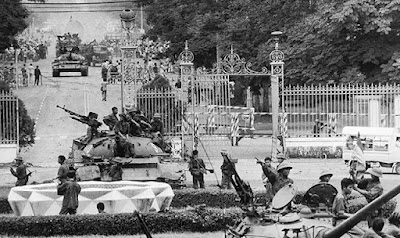The Vietnam War was a conflict marked by diverse challenges and unconventional warfare tactics. While tanks have historically played significant roles in conventional battles, their effectiveness in the dense jungles and rugged terrain of Vietnam is a subject of debate. This article explores the role of American tanks in the Vietnam War, assessing their effectiveness in a complex and unconventional conflict.
The Utilization of American Tanks: During the Vietnam War, the United States deployed various tanks, including the M48 Patton and the M551 Sheridan. These armored vehicles were primarily used for infantry support, convoy protection, and securing key strategic positions. However, the terrain and the nature of the conflict posed unique challenges for tank operations.
Challenges Faced by American Tanks:
- Terrain: Vietnam's dense jungles, marshlands, and rice paddies presented formidable obstacles for tank maneuverability. Tanks struggled to navigate through the thick vegetation, often becoming vulnerable to ambushes and hidden traps.
- Guerrilla Warfare: The Viet Cong and North Vietnamese Army (NVA) predominantly employed guerrilla tactics, utilizing hit-and-run ambushes and booby traps. Tanks, designed for conventional warfare, were ill-suited for combating these elusive and decentralized enemy forces.
- Lack of Visibility: The dense foliage and limited visibility in the jungle hindered the effectiveness of tanks' long-range engagement capabilities. This environment favored ambushes and close-range attacks, diminishing the advantage of armored vehicles.
- Maintenance Challenges: The humid tropical climate of Vietnam posed maintenance challenges for American tanks, leading to issues such as rust, mechanical failures, and difficulties in maintaining operational readiness.
Effectiveness and Limitations: While American tanks had their limitations in Vietnam, they still contributed to the overall military effort in several ways:
- Firepower: Tanks provided significant firepower support during conventional engagements and infantry operations. Their ability to deliver sustained heavy firepower proved crucial in certain battles, particularly in open terrain areas.
- Psychological Impact: The presence of tanks often had a psychological effect on enemy forces, instilling fear and disrupting their operations. This psychological advantage sometimes deterred enemy attacks and bolstered the morale of American troops.
- Convoy Protection: Tanks played a vital role in protecting convoys transporting supplies and troops through hostile territories. Their armor provided essential cover against ambushes and attacks, enhancing the security of logistical operations.
However, these contributions were often overshadowed by the challenges and limitations faced by American tanks in Vietnam. Their effectiveness was hampered by the nature of the terrain, the tactics employed by the enemy, and the logistical difficulties inherent in maintaining armored vehicles in a tropical environment.
The effectiveness of American tanks in the Vietnam War remains a subject of scrutiny and debate. While they provided significant firepower support and contributed to certain aspects of the military effort, their limitations in navigating the challenging terrain and countering guerrilla tactics were evident. The Vietnam War underscored the importance of adaptability and versatility in military operations, highlighting the need for specialized equipment and tactics tailored to the complexities of unconventional warfare environments.

